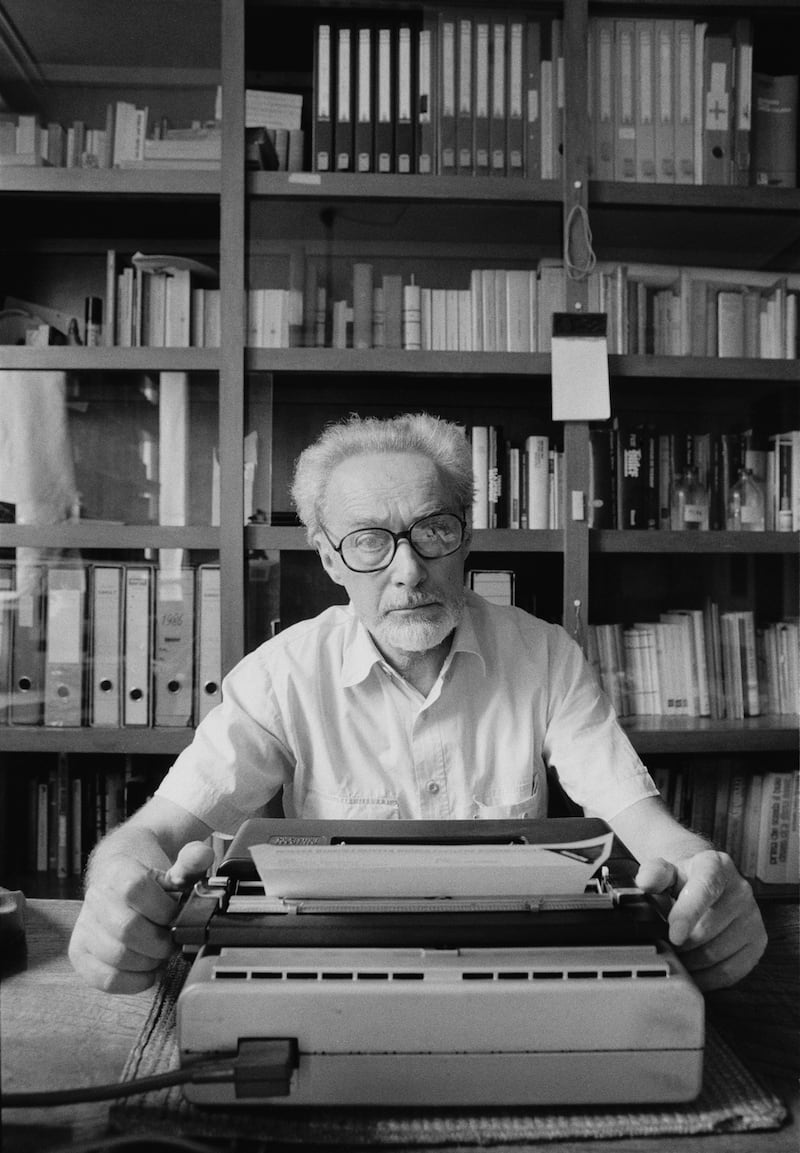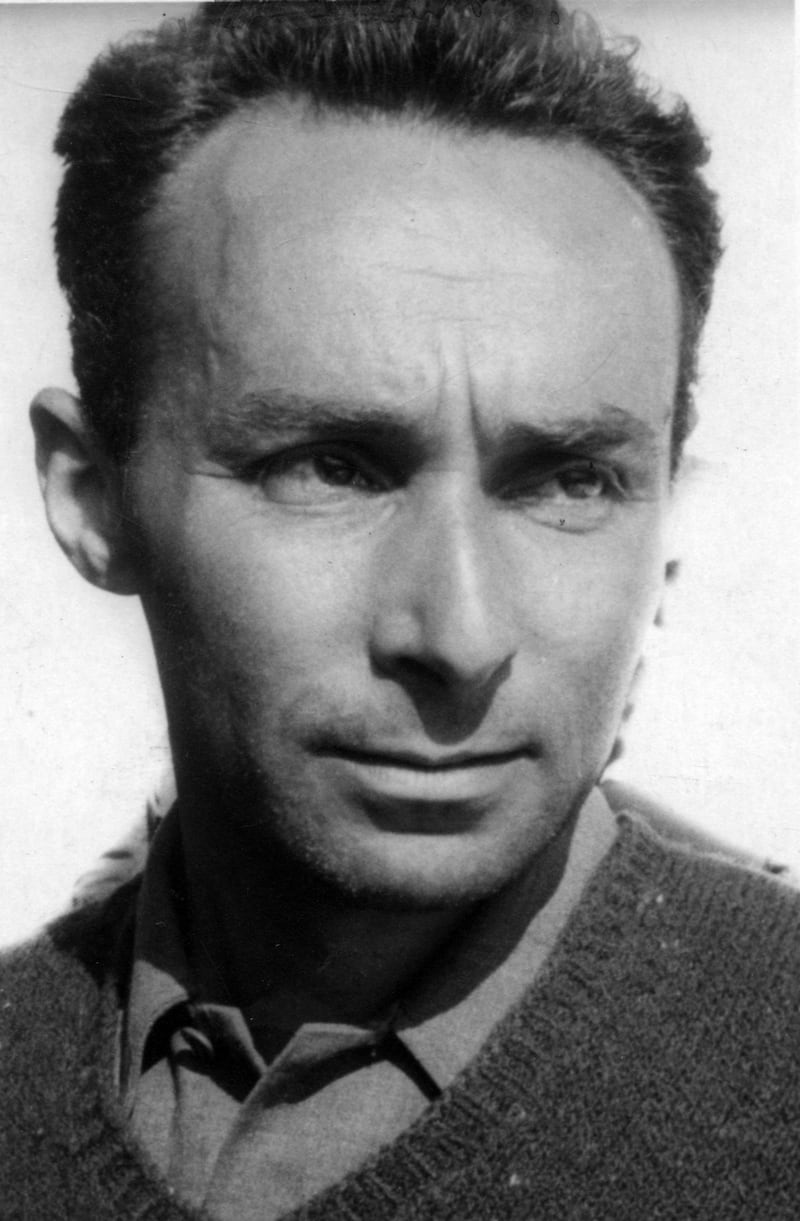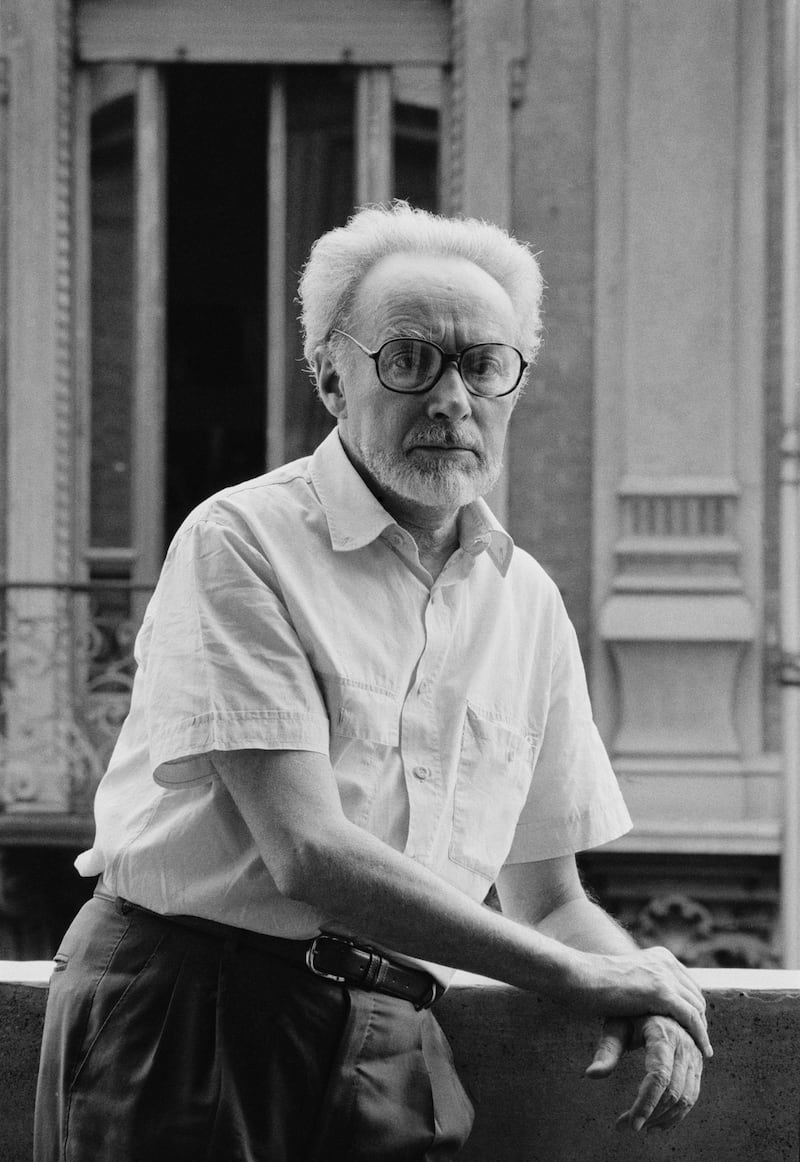On April 11th, 1987, a day of bright spring sunshine, Primo Levi fell to his death in the block of flats where he lived in Turin in northern Italy. He died in the same building where, on July 31st, 1919, he had been born. The authorities pronounced a verdict of suicide. Levi, at only 67, had pitched himself three flights down the stairwell: life had become intolerably dark and cheerless for him.
However, Levi is now one of the most respected and most read writers in the world. A Piazza Primo Levi honours his name in Turin, while in Naples, ragamuffin capital of the Italian south, a Via Primo Levi runs parallel to the sea. Levi had deep and abiding things to say about human nature, science and, pre-eminently, Nazi Germany’s genocidal attack on European Jewry. As every Italian knows, he wrote what is perhaps the greatest document we have about that horror, If This a Man. With quiet authority that memoir speaks of human disaster and human cruelty; but it also shows how it was possible, even in Auschwitz, anus mundi, to retain a sense of humanity. What sort of life did Levi lead?
I did not choose to write Levi’s biography; Levi had no sooner died than a London publishing house approached me. At first I demurred. Intellectually there seemed to be little point in such a book. Levi was a writer of ethical meditation in the school of the Renaissance essayist Michel de Montaigne, whose work stands as a luminous reflection on the ways of man: I did not feel adequate to the task.

In the winter of 1991, however, after consideration, I flew out to Levi’s native Turin, and rented rooms there. In my box-like quarters off Via Madama Cristina was a small bed and, next to that, a wardrobe, with a cracked sink in one corner and a kitchen in the adjacent room with a stove and a couple of back burners. There was no telephone. I had recently got married and felt a sense of truancy from responsibilities back home. Night and day a tram rattled along the street beneath my window while I read and reread Levi’s books, and filled in a notebook with names and telephone numbers of potential contacts and interviewees. Each morning after an espresso and a pastry in the bar opposite I went through the notebook, before heading off to a public call box at Porta Nuova railway station. There I telephoned and arranged to meet people who had known Levi. Often the lines were down or busy or had been disconnected. Mobile phones were then a luxury that few could afford and in the course of my research I used up hundreds of plastic “carta Telefonica” cards.
I could not have imagined how long it would take for me to write the biography. Progress was hampered by parenthood (the pram in the hall was a reminder always of other duties). Then I was almost beaten to the bookshops by a rival biographer. I should not have been surprised: publishing can be a brutal game of chance and biography always was a competitive business. The rivalry was bleakly undermining, nevertheless, and on several occasions I was tempted to abandon my book. I remember that I was at last making progress when, in late 1993 or early 1994, I discovered the existence of not just one, but two other Levi biographers. By the time they came to Turin I had already spoken to most of Levi’s surviving friends and relatives. All the same, writing and researching a book with competitors at one’s back is not to be recommended. Whatever I wrote would eventually have to be judged and sold against another book; I could never allow myself to forget that. One night I dreamed that a rival was standing over my bed in my room; another time I was on a tram heading down Via Madama Critstina when one of the rivals got on. In a hurry I got off. Hard though it was, I persisted in researching Levi’s life.
At all costs my biography had to come out at the same time as the rival's rather than lag fatally behind it
How I envied biographers who said they had become “possessed” by their subjects. It was not Primo Levi who possessed me, but Primo Levi’s biographers. The competition was conceivably a spur, though, as I believe I rooted out more documentation (certainly more public call boxes) than I might otherwise have done. Biographies will often pile up on the same subject, not least at anniversaries. (The tercentenary of Henry Purcell’s death in 1995 saw no fewer than four books published on the composer; and when Bob Dylan turned sixty in 2001, a slew of biographies crashed the party.) In my case, however, sheer bad luck dictated that two biographies of Primo Levi should appear at the same time. Need any of this have happened? Four decades ago, in the early 1980s, the National Book League (now the Book Trust) set up a register of biographers in order to avert clashes of this sort. Naturally it could not last: writers do not like to reveal their intentions and, anyway, most are vain enough to believe that they can trounce the opposition.
There were a number of false alarms in the build-up to publication in 2002. My book had been announced in the publisher’s catalogue two years before the writing was even finished, and I often received misleading intelligence that a rival was on the verge of completion. At all costs my biography had to come out at the same time as the rival’s rather than lag fatally behind it. In my race not to be the second Primo, page proofs were corrected at frantic speed, with manuscript bundles delivered to my London doorstep in Stoke Newington by motorbike couriers. The pressure was intense but I remember that my young son Sidney thrilled at the sight of the bikers in their leathers (as did my wife, I am afraid). In the interests of concision I cut 120,000 words at the last moment from the typescript and donated the jettisoned material to the Wiener Library in London (where it remains archived, along with my other Levi-related material, in eighteen cardboard boxes marked “Levi, Primo”). I recall that prior to publication day a woman had rushed up to me at the printer’s cradling a finished copy: “It’s a boy!” But I felt no joy. In all the national newspapers and in all the national weeklies the newborn was about to be compared and contrasted with the other newborn.
At first I could not bear to look at the reviews. The solo flight that I had longed for as Levi’s biographer had simply not happened. I pitied the reviewers, who had to read a combined total of nearly 1,500 pages in order to give a balanced assessment of each book. The bias of some reviewers was obvious but, fortunately, the two biographies could not have been more different. Although I had met and spoken to Primo Levi shortly before he died, I did not want to put myself on first-name terms with him (still less, place him on the psychiatrist’s couch). Nor had I wanted to make a drama out of my research or emote and empathise possessively with my own “Primo”. I had no agenda-driven argument to push, no academic thesis. My intention had been to write a balanced work that might inspire trust in the reader.

Competition was fierce, but for one improbable week in the spring of 2002 my biography was the UK bestseller after Margaret Thatcher’s Statecraft and Alan Titchmarsh’s How to be a Gardener. Inevitably, once the biographies had been launched I found myself locked in an undignified struggle for publicity. In the war of the two books, only one could possibly survive: the public would have to decide which one. In spite of its troubled and painful delivery, the biography has never gone out of print; perhaps that is hardly surprising.
Levi was not simply a witness to contemporary barbarism. By profession he was an industrial chemist. His hybrid career as chemist and writer – and the tensions between the two – forms a significant part of my biography. Levi’s literary-chemical memoir The Periodic Table, first published in Italy in 1975, attracted new scientific readers for him, and appeared at a time when authors with a scientific leaning were not published as frequently as they are today. Long before Carlo Rovelli or Oliver Sacks or Stephen Jay Gould, Levi had sought to make science accessible to the layperson. The Periodic Table, where elements of Levi’s life are explored through the medium of chemistry, is revered today by a generation of younger scientific writers, among them Siddartha Mukherjee, whose award-winning history of cancer, The Emperor of All Maladies (2011), is profoundly indebted to Levi as it cuts across the “two cultures” of science and the humanities with humility and intelligent generosity.
One hundred years on from his birth, to say that Levi is now a star is a literal truth. In 2011 a constellation situated midway between Mars and Jupiter was officially named Primolevi – just one word, in accordance with astronomy registry rules. The existence of Planet Primolevi might have delighted Levi, who was an occasional writer of science fiction. Levi is now so manifestly a “constellation” that a number of films inspired by his life and work have appeared posthumously. The great Neapolitan director Francesco Rosi, with his sharp, inquisitorial eye, might have been ideally suited to adapt The Truce, Levi’s chronicle of post-war homecoming to Italy from liberated Poland. Yet Rosi’s film version, appearing in 1997, was overblown and operatic, with the Coen brothers’ John Turturro (The Big Lebowski, Barton Fink) in the unlikely role of Primo Levi. The latest Italian film-maker to take an interest in The Truce, Davide Ferrario, chose to trace the course of Levi’s homeward odyssey to Italy through Russia and Eastern Europe in the form of a documentary. Moving across Ukraine to Austria, Primo Levi’s Journey, released in 2006, captured something of the boundless immensity of Russia as Levi had described it, with its steppe and tundra. The film concludes with an exterior shot of 75 Corso Re Umberto in Turin where, nineteen years earlier, Levi had died by his own hand.
No unpublished works by Levi have come to light in the three decades since he died. Levi had been too depressed to write anything much at all
For all that Levi is now a public figure in Italy, he remained one of the most secretive writers in the world. The outward serenity of his prose belied domestic turbulence. Levi, though, was adept at concealing his emotions: even in his autobiographical writings he rarely referred to his wife, and never to his mother or children. How such a man – in some ways a childlike and needy man, shy away from his family and friends – became one of the earliest literary “celebrities” in translation is a mystery of contemporary literature.
Unsurprisingly, no unpublished works by Levi have come to light in the three decades since he died. Levi had been too depressed to write anything much at all. Aware of this, his friend Giovanni Tesio, a Turin literary critic, suggested a series of conversations which he hoped might bring comfort to Levi, and also serve as the basis for a biography which he had in mind. Tesio never did write his life of Levi, but the three conversations he tape-recorded with him were reproduced belatedly in Italy in 2016 as Io che vi parlo (I who am speaking to you), and in the UK two years afterwards as Primo Levi: The Last Interview. Tesio was one of the many people I had telephoned from Porta Nuova railway station; we occasionally met for an aperitif, but Tesio could not be persuaded to release the tapes of those conversations. Now I can see why. Levi had allowed Tesio to question him on subjects of minimal interest only. What became of Levi’s school reports? (Lost.) Can Levi’s aunt be interviewed? (No, she has arthritis.) Essentially a book of gleanings, The Last Interview contains little that did not find its way eventually into this biography.

By contrast, other recent books on Levi have been more clamorous. How far Levi was involved in the execution of two fellow partisans during Italy’s German occupation was the subject of Sergio Luzzatto’s 2013 non-fiction study Partigia: Una storia della Resistenza (Partisan: A Story of the Resistance). Luzzatto, a young Turin history professor, identified the two executed men, accurately or not, as Fulvio Oppezzo (18) and Luciano Zabaldano (17). The decision to eliminate them had been arrived at “collectively”: that is, with Levi’s consent. More: it had been taken without just cause (di futili motivi). Had it really? Evidence came to light subsequently that suggested otherwise. A diary kept by a Roman Catholic priest in Brusson adjacent to Levi’s partisan base in the mountains above Turin revealed that a 65-year-old Jewish refugee – Elsa Polkorny from Vienna – had committed suicide following “threats” made to her by two partigiani marauding drunkenly in the area. Oppezzo and Zabaldano?* Predictably, Luzzatto’s book provoked moral outrage in Italy. Partigia had introduced an element of moral ambiguity – Levi’s now infamous “grey zone” – into discussions of the Resistance, and blurred the easy distinctions so often made in post-war Italy between the victors and the vanquished. For that reason alone, Partigia remains a work of some importance, which goes to the heart of arguments about justice and moral responsibility in Primo Levi’s wartime.
Three decades on from Primo Levi's death, I can say that I am proud of the biography. It gives a good enough idea of what Levi might have been like to meet as a man: a lucid explicator, witty, if rather reserved. In fact I look back on my younger self with a degree of wonderment. Did you really write this book? Heaven knows it was hard enough to write; but it allowed me to keep company with one of the most important writers of our time, and that was more than enough.
Ian Thomson's Primo Levi: The Elements of a Life is published by Vintage/Penguin









